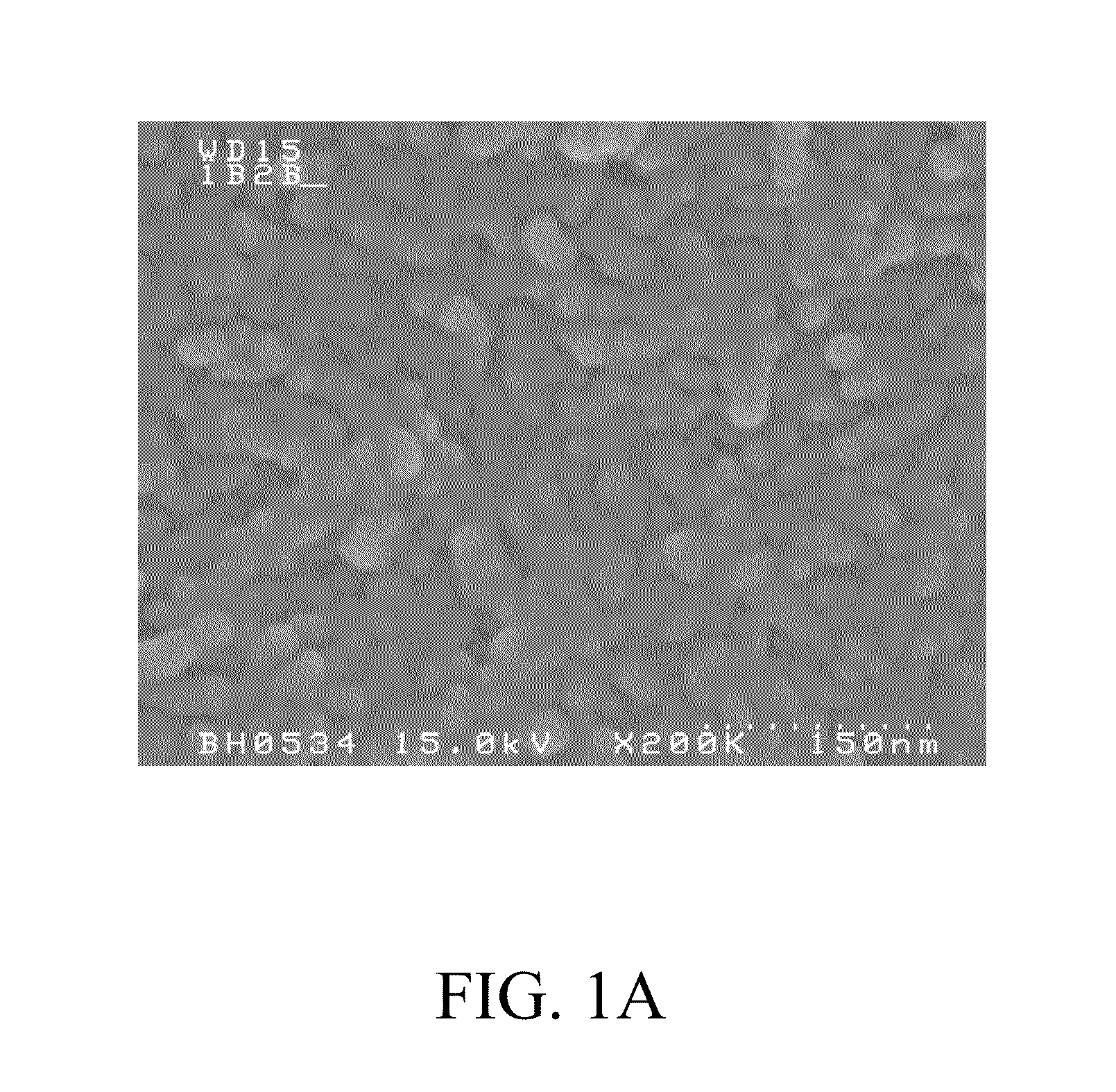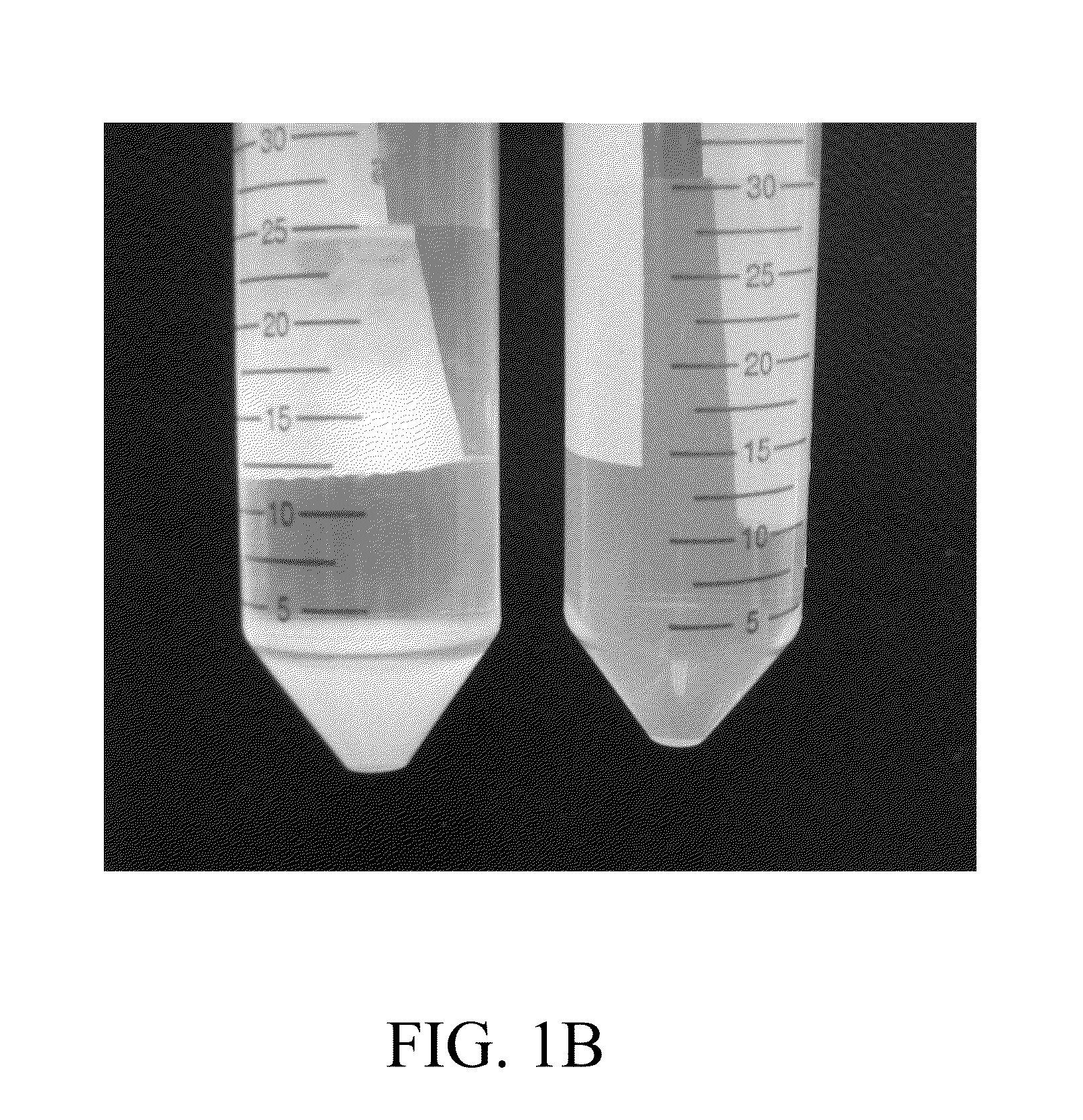Surface Functionalized Colloidally Stable Spheroidal Nano-apatites Exhibiting Intrinsic Multi-functionality
a functionalized, colloidal technology, applied in the direction of phosphorus oxyacids, magnetic materials, magnetic bodies, etc., can solve the problems of high unfavorable uncontrolled aggregation, “energy-driven,” and low colloidal stability, and achieve enhanced nanoparticle dispersions, simple synthesis, and high potential for scale up and production
- Summary
- Abstract
- Description
- Claims
- Application Information
AI Technical Summary
Benefits of technology
Problems solved by technology
Method used
Image
Examples
example 1
General Synthesis.
[0020]A preferred embodiment of the nanoparticles of the subject invention are synthesized as follows:
(1) 10 mM of Ca(OH)2 is stirred and equilibrated at 40° C. in 200 ml for 15 minutes.
(2) Subsequently, a calcium ion chelator (citric acid), specifically 2.0-3.3 mmoles is added to the solution in (1).
(3) Lastly, 50 ml containing 6 mmoles of a phosphate (PO43−) source (KH2PO4) is added drop wise to achieve a final volume of 250 ml.
(4) At this time point the pH is about 8.5 and an amorphous calcium phosphate precursor gel is formed, which is then aged typically for 3 days before the final product is formed. (FIGS. 2A-2D show the morphological evolution of the particles under SEM), (FIGS. 3A and 3B show the evolution of apatite structure via X-ray diffraction and Fourier transformed infra-red spectroscopy, respectively).
(5) The final product is a dispersion of nanoparticulate calcium hydroxyl-carbonated apatite in the 10 nm size range, which is clear to the naked eye....
example 2
Synthesis of Metal Doped Nanoparticles.
[0021]A preferred embodiment of the metal doped apatite nanoparticles of the subject invention are synthesized as follows:
(1) 10 mmoles of Ca(OH)2 is stirred and equilibrated at 40° C. in 200 ml for 15 minutes.
(2) Subsequently, a calcium ion chelator (citric acid), specifically 2.0-3.3 mmoles is added.
(3) The metal dopant (Mx+), was introduced into the apatite lattice at the necessary mole fraction in the form of a soluble salt. (Fe3+ was added at 30 mol. % and Nd3+ was added at 10 mol. % compared to calcium to produce 3Fe—7Ca hydroxyapatite or 1Nd—9Ca hydroxyapatite).
(4) Lastly, 50 ml containing 6 mmoles of a phosphate (PO43−) source (KH2PO4) is added drop wise to achieve a final volume of 250 ml.
(5) At this time point the pH is about 5 due to addition of the metal salt. Typically 0.5 M NaOH is added dropwise to increase the pH to 8.5. An amorphous calcium phosphate precursor gel is then formed, which is then aged typically for 3 days before t...
example 3
Characterization of the Nanoparticles.
[0022]The nanoparticles from Example 1 were examined using field emission scanning electron microscopy (FESEM) and transmission electron microscopy (TEM) and size distribution as determined by these techniques confirmed a 10-20 nm size range for these apatite particles. The particles were more spheroidal (FIG. 1) as opposed to acicular equilibrium shaped particles, attributed to hydroxyapatite. Fourier transform infra-red spectroscopy (FTIR) spectroscopy confirmed that these nanoparticles contained carbonates in the lattice in place of phosphate groups and a blue shifted (C═O) band revealing substantial single bond character corresponding to chemically attached citrate groups on the nanoparticulate surfaces.
[0023]The iron (Fe) and neodymium (Nd) substituted particles (Example 2) were also analyzed similarly and FESEM and FTIR spectroscopy results indicated that the size range and chemical structure of these doped apatite nanoparticles were simil...
PUM
| Property | Measurement | Unit |
|---|---|---|
| pH | aaaaa | aaaaa |
| volume | aaaaa | aaaaa |
| volume | aaaaa | aaaaa |
Abstract
Description
Claims
Application Information
 Login to View More
Login to View More - R&D
- Intellectual Property
- Life Sciences
- Materials
- Tech Scout
- Unparalleled Data Quality
- Higher Quality Content
- 60% Fewer Hallucinations
Browse by: Latest US Patents, China's latest patents, Technical Efficacy Thesaurus, Application Domain, Technology Topic, Popular Technical Reports.
© 2025 PatSnap. All rights reserved.Legal|Privacy policy|Modern Slavery Act Transparency Statement|Sitemap|About US| Contact US: help@patsnap.com



